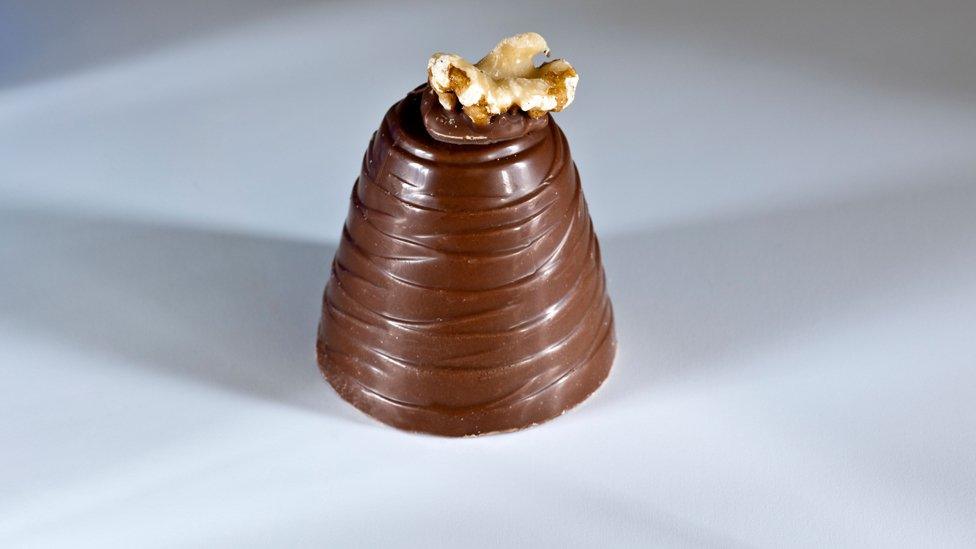What goes on at a walnut harvest?
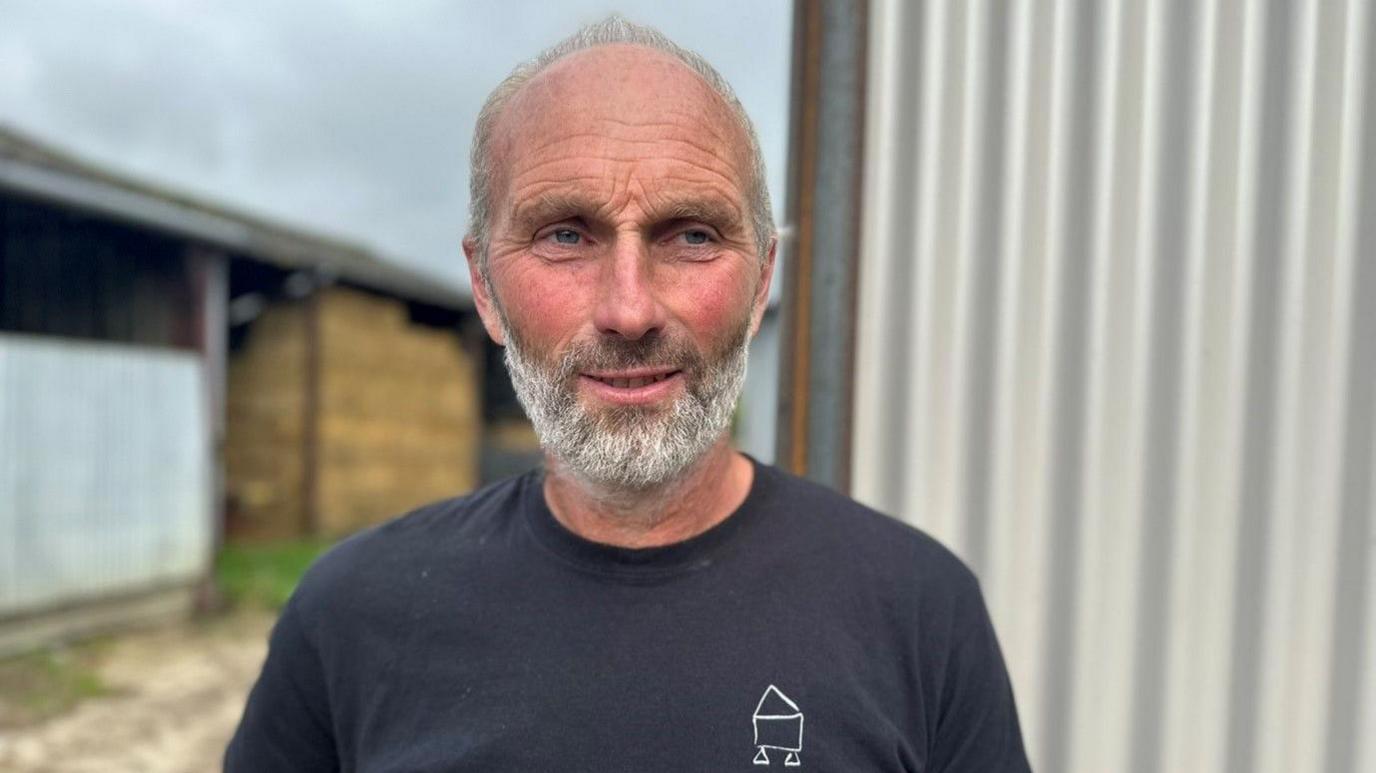
David Tame is one of the owners of the Granary Oil Company, in Warwickshire
- Published
Watching from a safe distance, the massive tree starts violently vibrating and conker-sized, green "fruits" cascade down to the ground.
Right now is the peak of the walnut harvest, and I've come to Burmington Farm, Warwickshire, to see them go from tree to an apparently delicious oil for drizzling.
Those green "fruits" actually contain the more familiar walnut shell and, of course, inside that is the nut itself. Unlike the sometimes bitter walnut you crack and eat at Christmas, these are very pale and have a subtle taste.
According to brothers Tom and David Tame, this is likely the only farm in the UK where nuts are grown, harvested and turned into oil for pouring over salads and pasta.
There are about 70 varieties of English walnut, and on this farm, they grow at least a dozen, as well as other nuts such as pecans.
Harvesting is done on much the same principal as commercial cider apples. In this case, a cable from a tractor is attached to the trunk of the tree, David fires up the engine and a special attachment jiggles the cable, vibrating the tree and shaking the nuts to the ground.
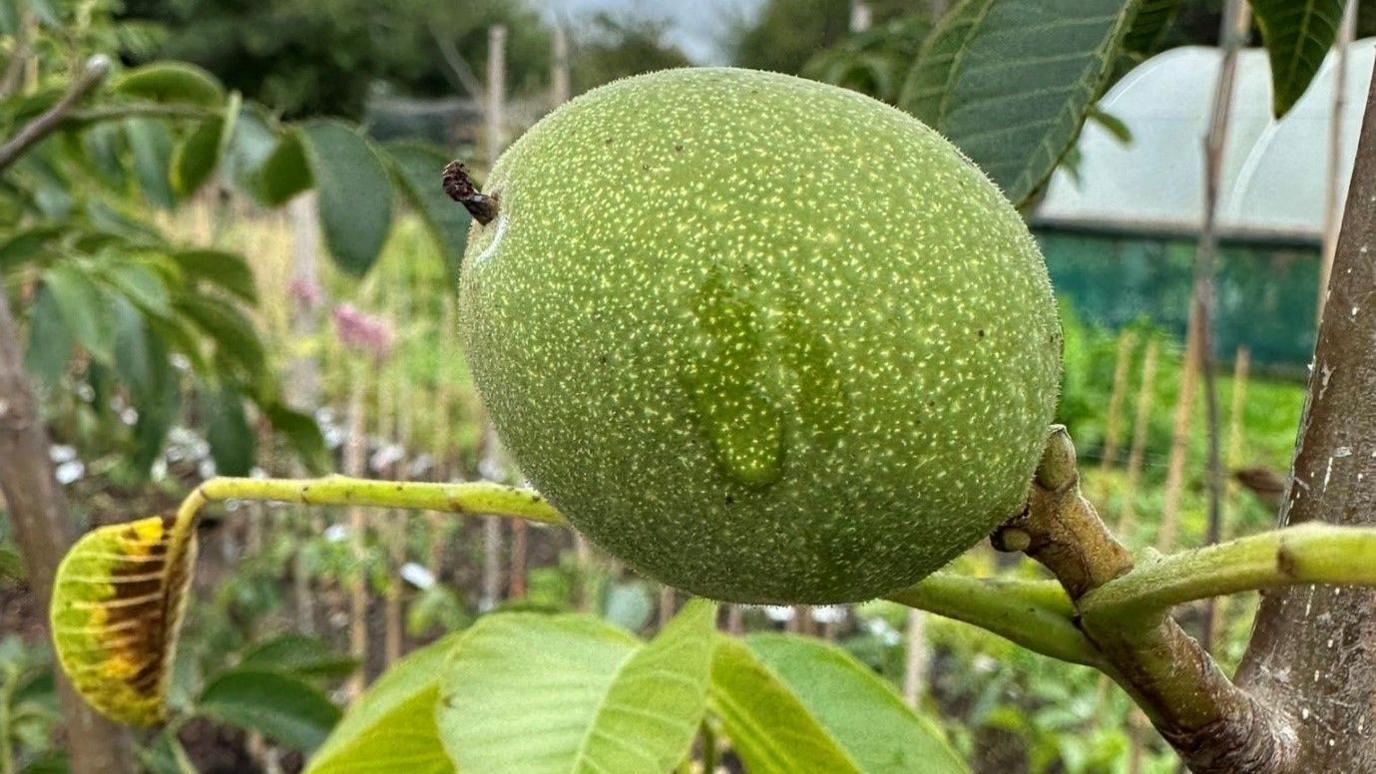
A walnut before it is shaken down ready for harvest
The team then gathers the harvest by hand, rolling a wire cage attached to the end of a broomstick over the ground.
The nuts are squeezed between the wires of the cage and collected before being emptied into a wheel barrow.
Then it's on to washing. At this point, most of the green husk has fallen away, revealing the more familiar walnut shell.
Any remaining husks are removed by being swirled around in water.

After the green husk is washed away, walnuts start looking more familiar
The nuts are cracked by machine before a final sort. As they move along a conveyor belt, pieces of shell and any black nuts are removed, leaving the rest to be graded by size.
For oil, those nuts are ground down and then slowly cold pressed.
The results end up in Warwickshire shops and in the kitchens of some very fancy London restaurants.
Sadly, I can't tell you how good the oil or the nuts are because I'm actually allergic. My colleague Paul gave both the thumbs up though.

On this machine, any shell or black nuts are removed
This is a high value crop of about 800kg of nuts, produced from just six hectares of land.
But the eventual aim is to expand to the point where the annual harvest is up to 30 tonnes of walnuts.
Most of these won't be for oil. Fresh nuts don't last more than a few weeks, so usually they are dried and then become the more familiar cracking walnut that can last for up to a year.
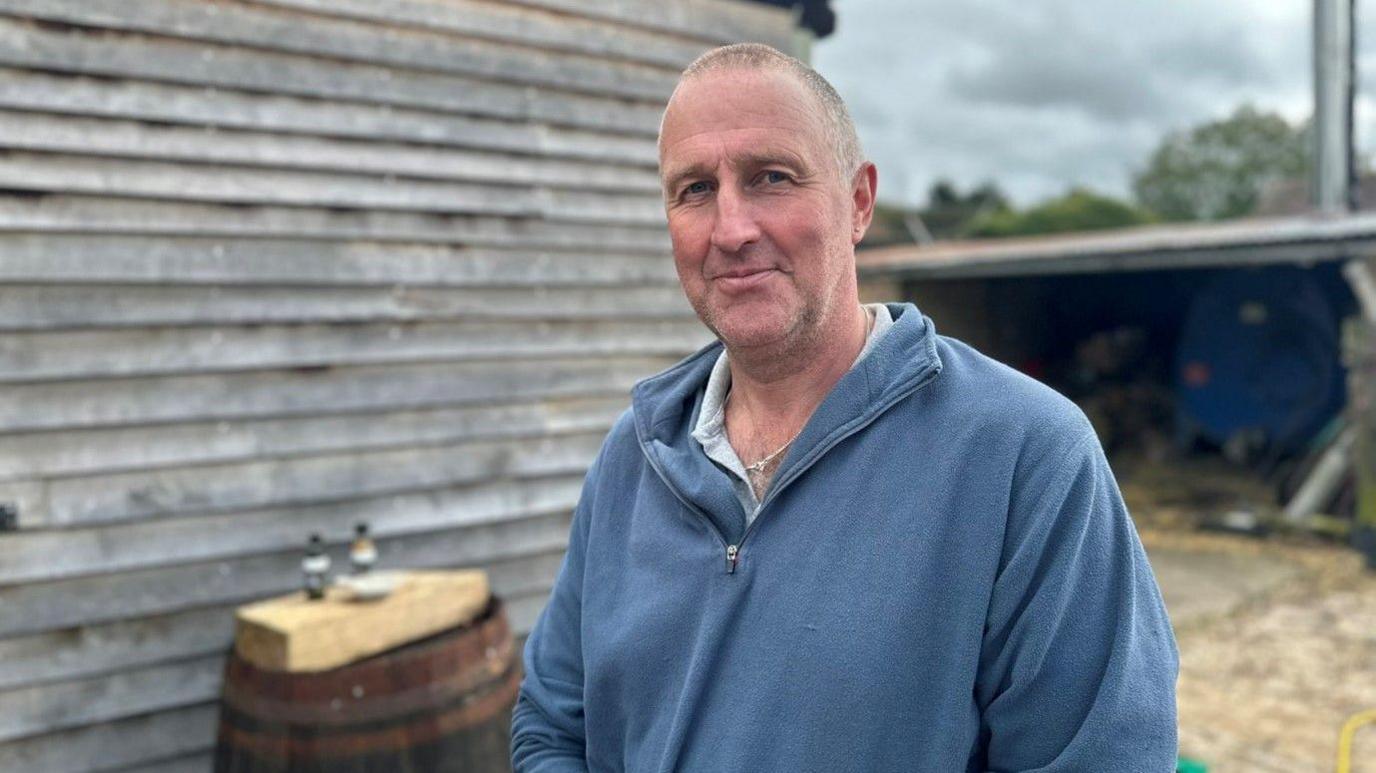
Tom Tame runs the business with his brother
With Christmas food already in the shops, do the brothers have any comment on the mostly imported walnuts we find in bowls during the festive period?
Well, it's fair to say they view these nuts as decidedly inferior and say they often have a bitter aftertaste.
Sadly for me, the world of walnuts will remain a mystery, but if you do enjoy them, try searching out the English walnut produced by one of our rarest harvests.
Get in touch
Tell us which stories we should cover in Warwickshire
Follow BBC Coventry & Warwickshire on BBC Sounds, Facebook, external, X, external and Instagram, external.
Related topics
- Published9 October 2019
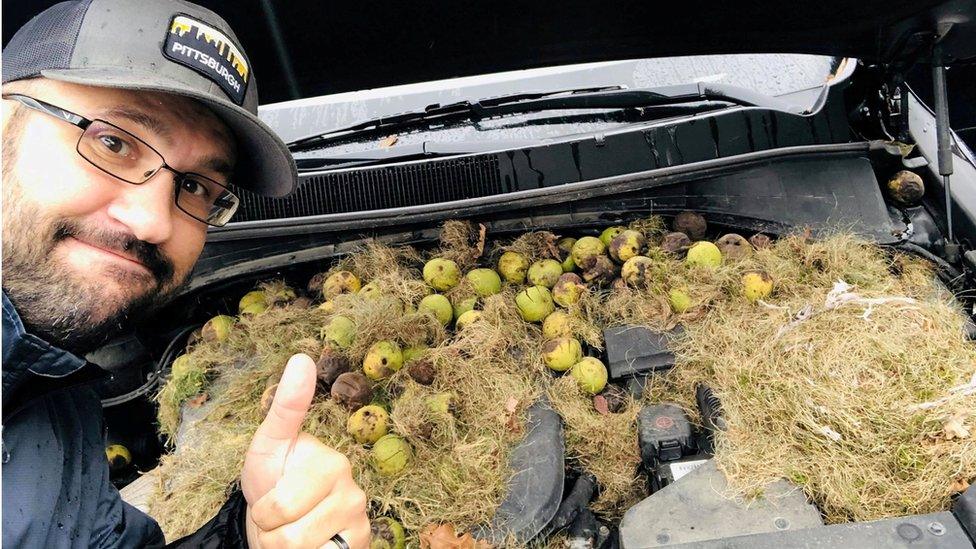
- Published16 August 2017
